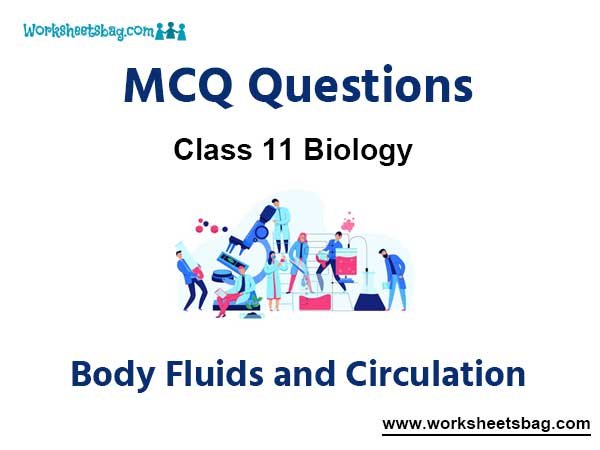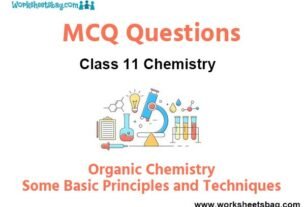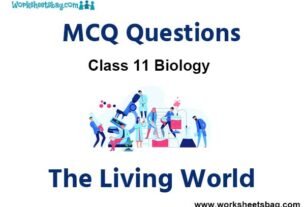Please refer to Body Fluids and Circulation MCQ Questions Class 11 Biology below. These MCQ questions for Class 11 Biology with answers have been designed as per the latest NCERT, CBSE books, and syllabus issued for the current academic year. These objective questions for Body Fluids and Circulation will help you to prepare for the exams and get more marks.
Body Fluids and Circulation MCQ Questions Class 11 Biology
Please see solved MCQ Questions for Body Fluids and Circulation in Class 11 Biology. All questions and answers have been prepared by expert faculty of standard 11 based on the latest examination guidelines.
MCQ Questions Class 11 Biology Body Fluids and Circulation
Question- Sinu-atrial node in human heart is embedded in the wall of
(a) sinus-venosus
(b) interatrial septum
(c) right atrium
(d) atrioventricular septum
Answer
C
Question- Which one engulfs pathogens rapidly?
(a) Acidophils
(b) Monocytes
(c) Basophils
(d) Neutrophils
Answer
D
Question- The heart sound ‘dupp’ is produced when
(a) tricuspid valve is opened.
(b) mitral valve is opened.
(c) mitral valve is closed.
(d) semi-lunar valves at the base of aorta get closed.
Answer
D
Question- What is true about leucocytes ?
(a) Their sudden fall in number is indication of blood cancer
(b) These are produced in thymus
(c) These are enucleated
(d) These can squeeze out through the capillary walls
Answer
D
Question- Cardiac cycle in man takes about
(a) 0.5 seconds
(b) 1.0 second
(c) 1.2 seconds
(d) 0.8 seconds
Answer
D
Question- Which of the following is responsible for ABO grouping?
(a) Presence or absence of clotting factors.
(b) Compatibility of blood groups during blood transfusion.
(c) Presence or absence of surface antigens (A and B) on WBCs.
(d) Presence or absence of two surface antigens (A and B) on the RBCs.
Answer
D
Question- Rh factor is named after
(a) monkey
(b) Drosophila
(c) rat
(d) man
Answer
A
Question- Coronary artery disease (CAD) is often referred to as
(a) heart failure
(b) cardiac arrest
(c) atherosclerosis
(d) angina
Answer
C
Question- When the blood of a foetus is agglutinated by its mother’s Rh antibodies, then which of the following condition arises as a severe anaemia?
(a) Immunization
(b) Ectopic pregnancy
(c) Erythroblastosis foetalis
(d) Both (b) and (c)
Answer
C
Question- __________ plays an important role in blood clotting.
(a) Sodium
(b) Chlorine
(c) Calcium
(d) Potassium
Answer
C
Question- Contraction of the ventricle in the heart begins by the command from
(a) Purkinje fibres
(b) AV node
(c) chordae tendinae
(d) SA node
Answer
D
Question- Clotting of blood is to
(a) seal up wounds and prevent blood loss.
(b) slow down the movement of blood inside the blood vessels.
(c) trap oxygen inside the blood so that it can be carried around more easily.
(d) trap harmful germs inside the blood and prevent them from harming the body.
Answer
A
Question- In blood
(a) WBCs are more than RBCs
(b) RBCs are more than WBCs
(c) RBCs are less than platelets
(d) Platelets are less than WBCs
Answer
B
Question- Fish has ___(i)____ and ___(ii)___ circulatory system.
(a) (i)- open, (ii)- single
(b) (i)- open, (ii)- double
(c) (i)- closed, (ii)- single
(d) (i)- closed, (ii)- double
Answer
C
Question- Which of the following set of animals has an incomplete double circulation system ?
(a) Frog and crocodile
(b) Shark and whale
(c) Lizard and pigeon
(d) Toad and lizard
Answer
D
Question- ‘P’ wave of ECG occurs before the
(a) onset of ventricular contraction.
(b) end of arterial contraction.
(c) beginning of atrial contraction.
(d) none of the above.
Answer
C
Question- Nodal tissue/musculature in human heart has
(a) the ability to generate action potential due to any external stimuli.
(b) two patches, one in atrium and other in ventricle.
(c) purkinje fibres throughout the ventricular musculature.
(d) atrioventricular node, also called pacemaker.
Answer
C
Question- Which of the following has the thickest walls?
(a) Right ventricle
(b) Left ventricle
(c) Right auricle
(d) Left auricle
Answer
B
Question- Pulmonary vein, carrying oxygenated blood, opens into
(a) left auricle
(b) right auricle
(c) left ventricle
(d) right ventricle
Answer
A
Question- The pacemaker of the human heart is
(a) SA node
(b) tricuspid valve
(c) AV node
(d) SV node
Answer
A
Question- Which one of the following blood vessel is without valves?
(a) Artery
(b) Pulmonary aorta
(c) Vein
(d) Systemic aorta
Answer
A
Question- Pulse beat is measured from
(a) capillaries
(b) arteries
(c) veins
(d) nerves
Answer
B
Question- The opening of auricles into ventricles on the right side is guarded by which valve?
(a) Tricuspid
(b) Bicuspid
(c) Semilunar
(d) Mitral valve
Answer
A
Question- Bicuspid valve allows blood from
(a) right auricle to left ventricle.
(b) right auricle to right ventricle.
(c) left auricle to left ventricle.
(d) post caval to heart.
Answer
C
Question- ‘Bicuspid’ term is applied to
(a) a valve in heart and a bone of pelvic girdle.
(b) a muscle in upper arm and a valve in heart.
(c) a valve in heart and tooth surface.
(d) a valve in heart.
Answer
C
Question- ‘Bundle of His’ is a part of which one of the following organs in humans?
(a) Brain
(b) Heart
(c) Kidney
(d) Pancreas
Answer
B
Question- Which of the following cations is required for the conversion of prothrombin into active thrombin by thromboplastin?
(a) Cu2+
(b) Fe3+
(c) Fe2+
(d) Ca2+
Answer
D
Question- Lymph is modified blood that contains
(a) RBC and WBC
(b) RBC, WBC and protein
(c) WBC and all protein
(d) all contents of blood except RBC and certain protein
Answer
D
Question- A four-chambered heart is found in
(a) mammals only
(b) humans only
(c) all vertebrates
(d) some reptiles, all birds and mammals
Answer
D
Question- In adult man, normal BP is
(a) 100/80 mm Hg
(b) 120/80 mm Hg
(c) 100/120 mm Hg
(d) 80/120 mm Hg
Answer
B
Question- What is correct for blood group ‘O’?
(a) No antigens but both a and b antibodies are present
(b) A antigen and b antibody
(c) Antigen and antibody both absent
(d) A and B antigens and a, b antibodies
Answer
A
Question- Which term does not apply to human heart?
(a) Pacemaker
(b) Four chambered
(c) Mitral valve
(d) Neurogenic
Answer
D
Question- Which of the following is considered as the soldiers of body?
(a) Lungs
(b) Capillaries
(c) Red blood cells
(d) White blood cells
Answer
D
Question- In mammals the blood from the right ventricle goes to
(a) systemic aorta
(b) precavals
(c) truncus arteriosus
(d) pulmonary aorta
Answer
D
Question- Open type blood vascular system is found in
(a) earthworm
(b) lizard
(c) cockroach
(d) toad
Answer
C
Question- The first heart sound is
(a) ‘LUBB’ sound produced at the end of systole.
(b) ‘DUP’ sound produced at the end of systole.
(c) ‘LUBB’ sound produced at the beginning of systole.
(d) ‘DUP’ sound produced at the beginning of systole.
Answer
C
Question- Closure of which of the following valves makes louder sound of heart beat?
(a) Mitral valve
(b) Seminular valve
(c) Auriculo-ventricular valve
(d) Tricuspid valve
Answer
C
Question- The pattern of contraction and relaxation of the heart is referred to as
(a) blood pressure
(b) arterial flow
(c) blood flow
(d) cardiac cycle
Answer
D
Question- Lymph differs from blood in
(a) absence of RBC
(b) absence of WBC
(c) excess of water
(d) absence of protein
Answer
A
Question- QRS is related to
(a) ventricular contraction
(b) auricular contraction
(c) cardiac cycle
(d) auricular relaxation
Answer
A
Question- The largest artery in the body is
(a) aorta
(b) precaval
(c) vena cava
(d) pulmonary artery
Answer
A
Question- What is the function of valve?
(a) To prevent blood from flowing into the aorta.
(b) To push blood into the ventricle.
(c) To push blood into the aorta.
(d) To prevent backflow of blood into the left ventricle.
Answer
D
Question- Which circulation provides nutrients and oxygen to cardiac muscle tissue?
(a) Pulmonary circulation
(b) Systemic circulation
(c) Lymphatic circulation
(d) Coronary circulation
Answer
D
Question- Which structures are directly involved in the pulmonary circulation?
(a) Right atrium, aorta and left ventricle.
(b) Left ventricle, aorta and inferior vena cava.
(c) Superior vena cava, right atrium and left ventricle.
(d) Right ventricle, pulmonary arteries and left atrium.
Answer
D
Question-Which structures are directly involved in the “systemic circulation”?
(a) Superior vena cava, right ventricle and left ventricle.
(b) Right ventricle, pulmonary arteries and left atrium.
(c) Left ventricle, aorta and inferior vena cava.
(d) Right atrium, pulmonary trunk and left ventricle.
Answer
C
Question- Which of the following carries oxygenated blood?
(a) Renal vein
(b) Hepatic portal vein
(c) Hepatic vein
(d) Pulmonary vein
Answer
D
Question- A blockage in aortic valve would directly reduce blood flow to the _______.
(a) heart
(b) liver
(c) lungs
(d) brain
Answer
C
Question- Which of the following parts of heart possess semilunar valves?
(i) Aorta (ii) Vena cava
(iii) Pulmonary artery (iv) Pulmonary vein
(a) (i) and (iii)
(b) (i), (ii) and (iii)
(c) (ii) and (iii)
(d) (i), (iii) and (iv)
Answer
A
Question- Heart is covered by
(a) peritoneum
(b) pleural membrane
(c) pericardium
(d) visceral membrane
Answer
C
Question- Hardening of the arteries due to deposition of cholesterol is called
(a) thrombosis
(b) atherosclerosis
(c) rhinitis
(d) angina
Answer
B
Question- Pulmonary artery arises from
(a) right atrium
(b) left atrium
(c) right ventricle
(d) left ventricle
Answer
C


